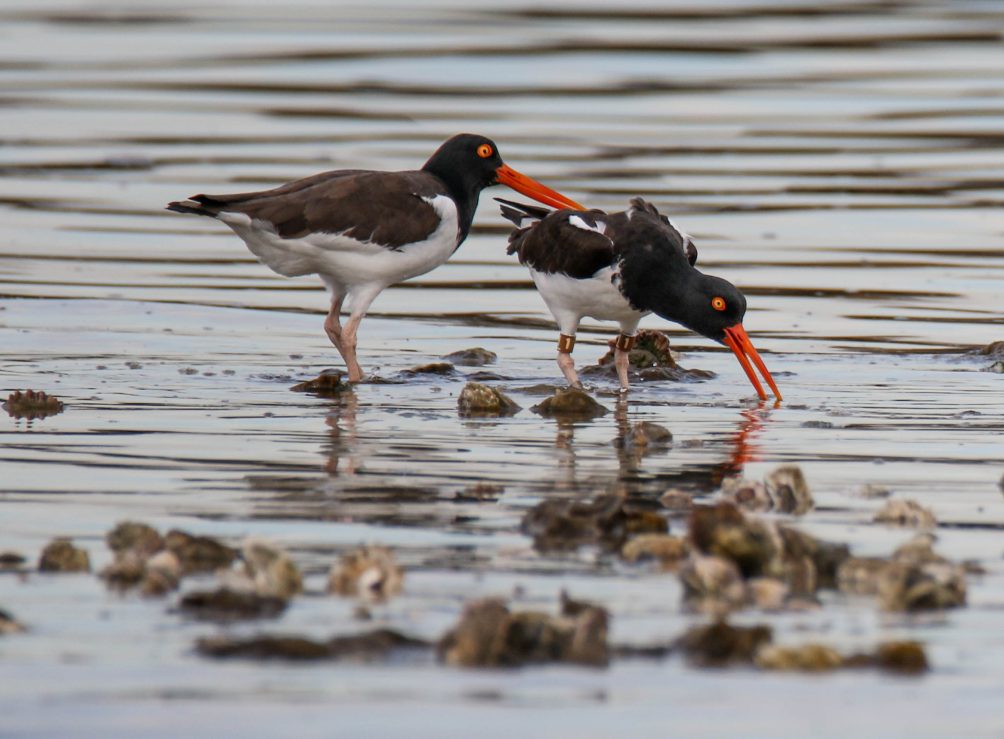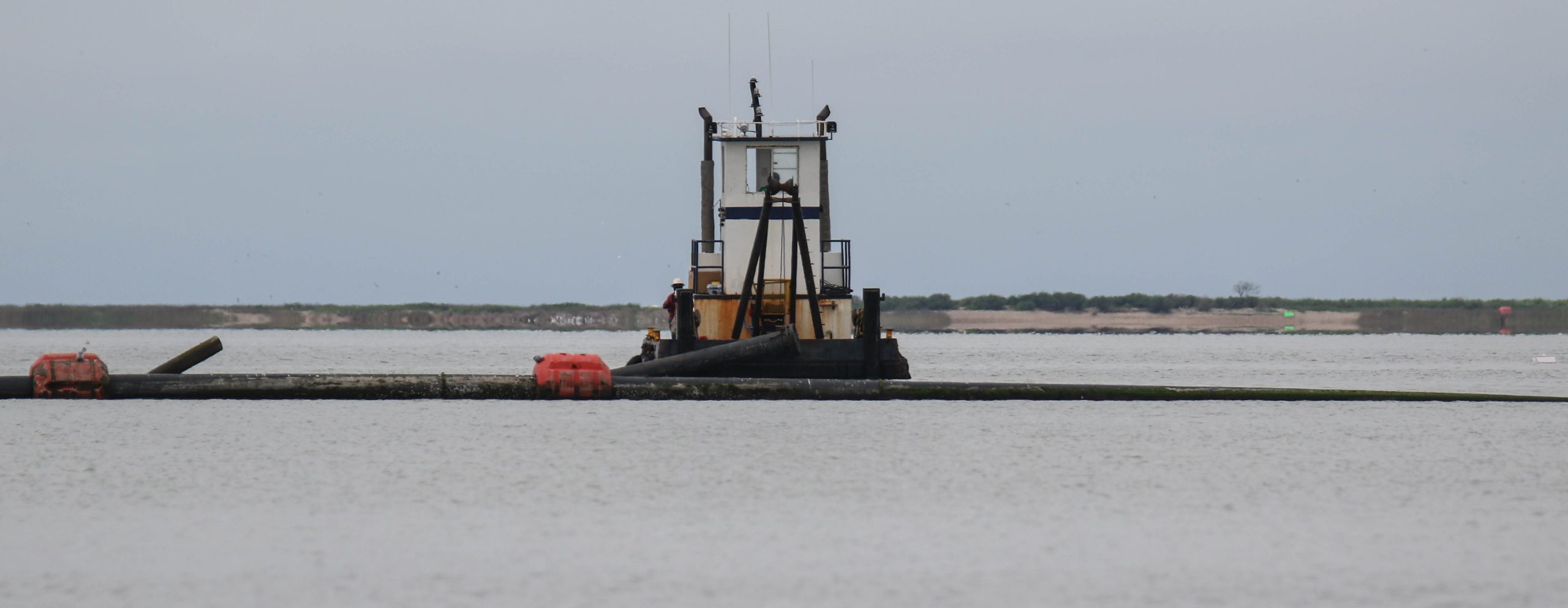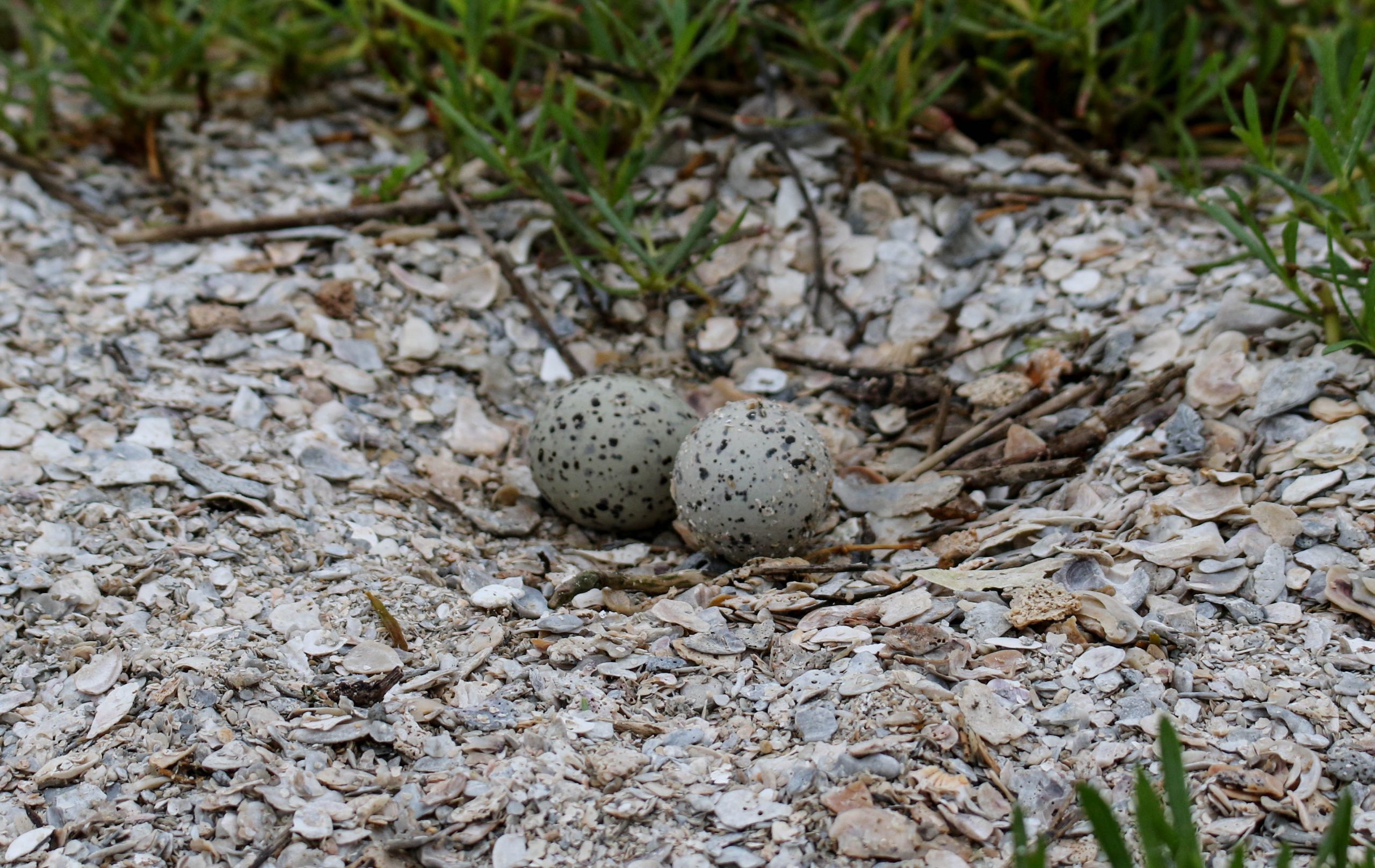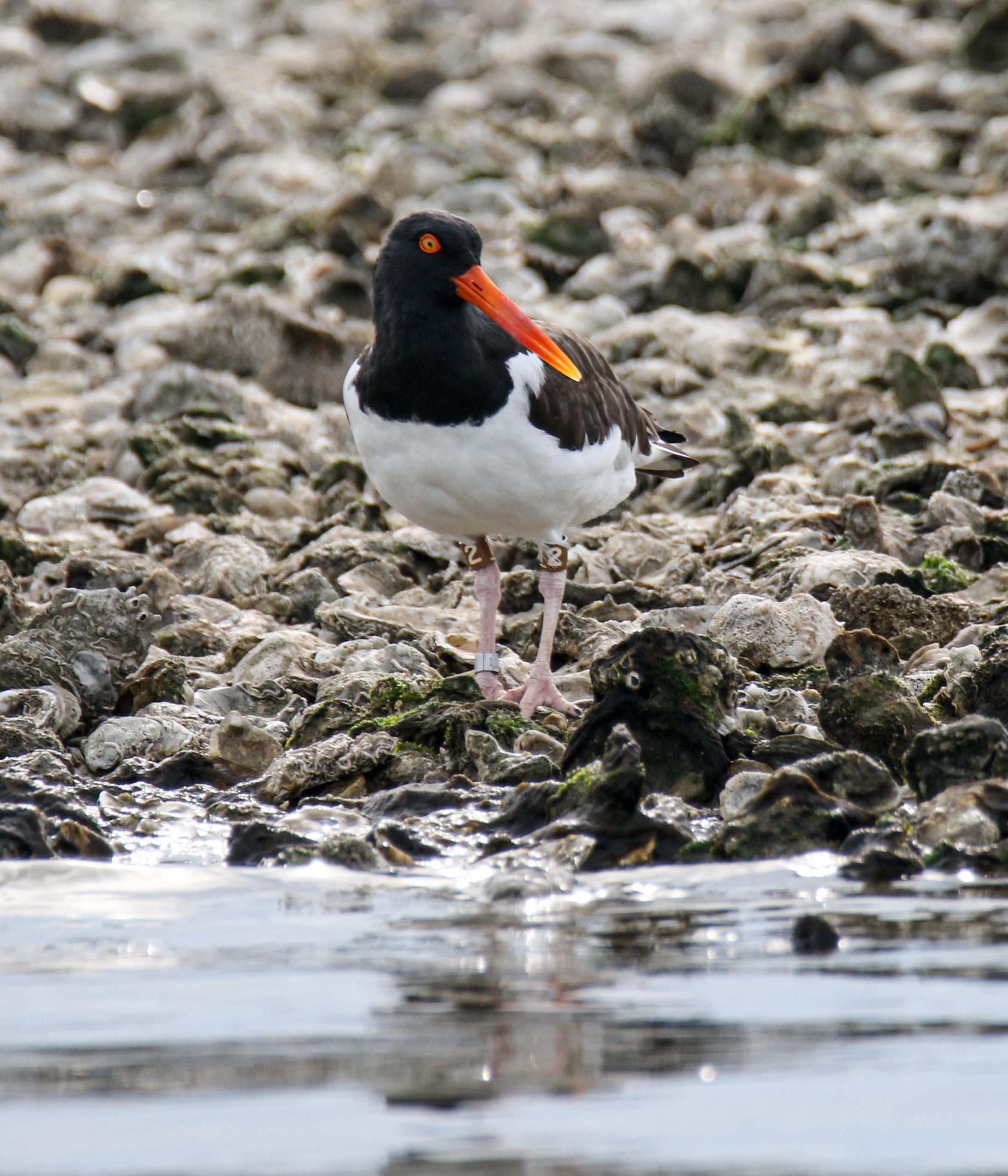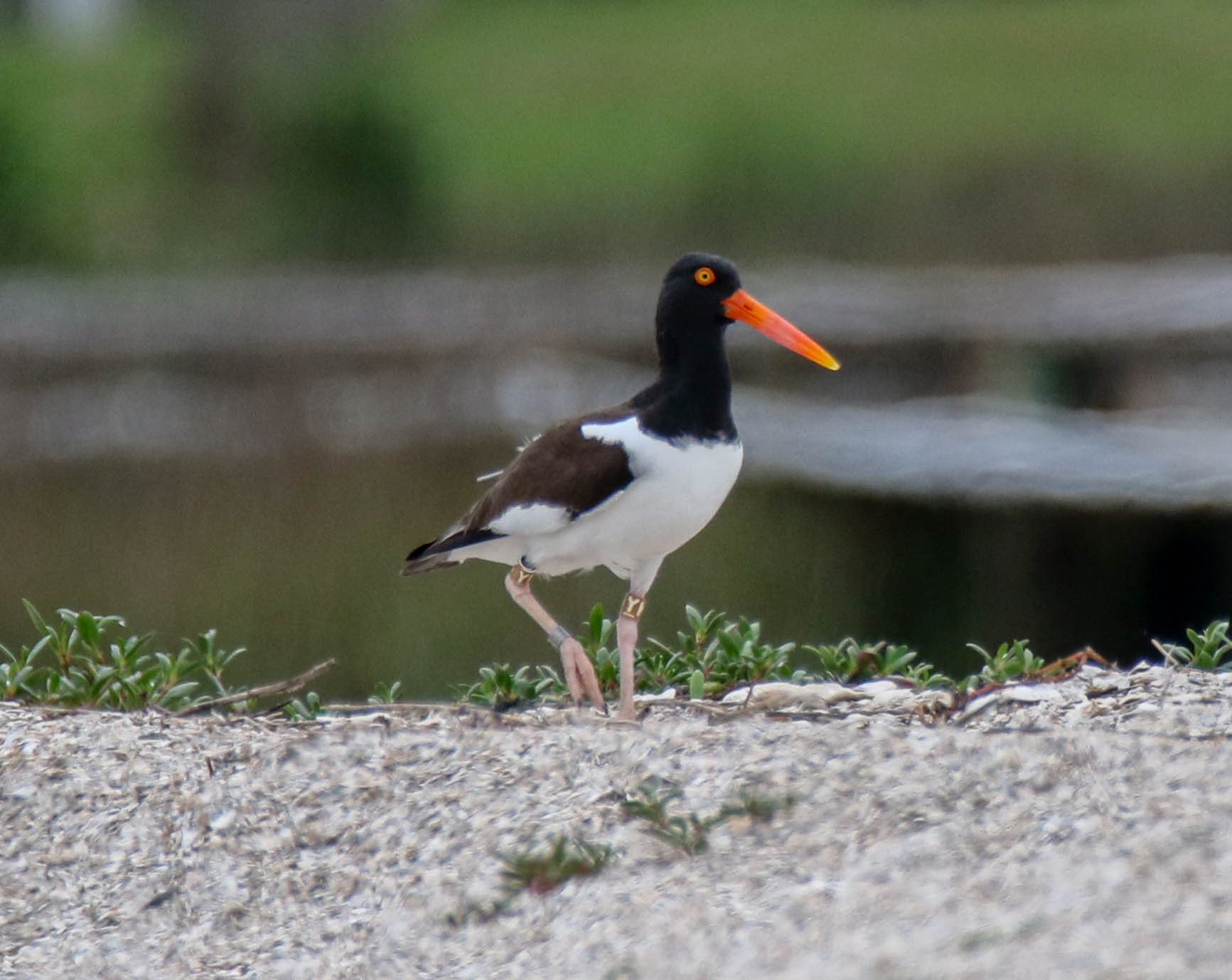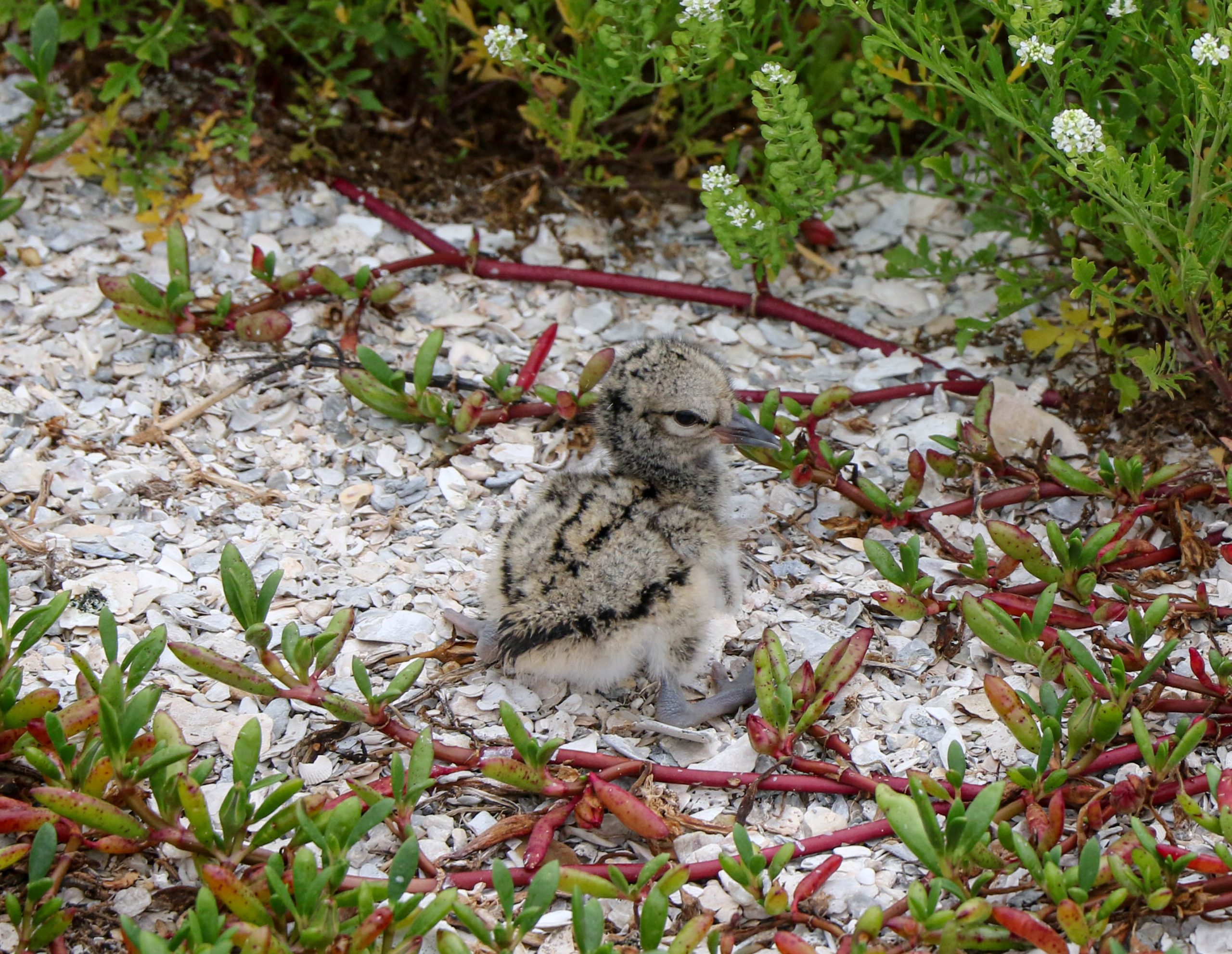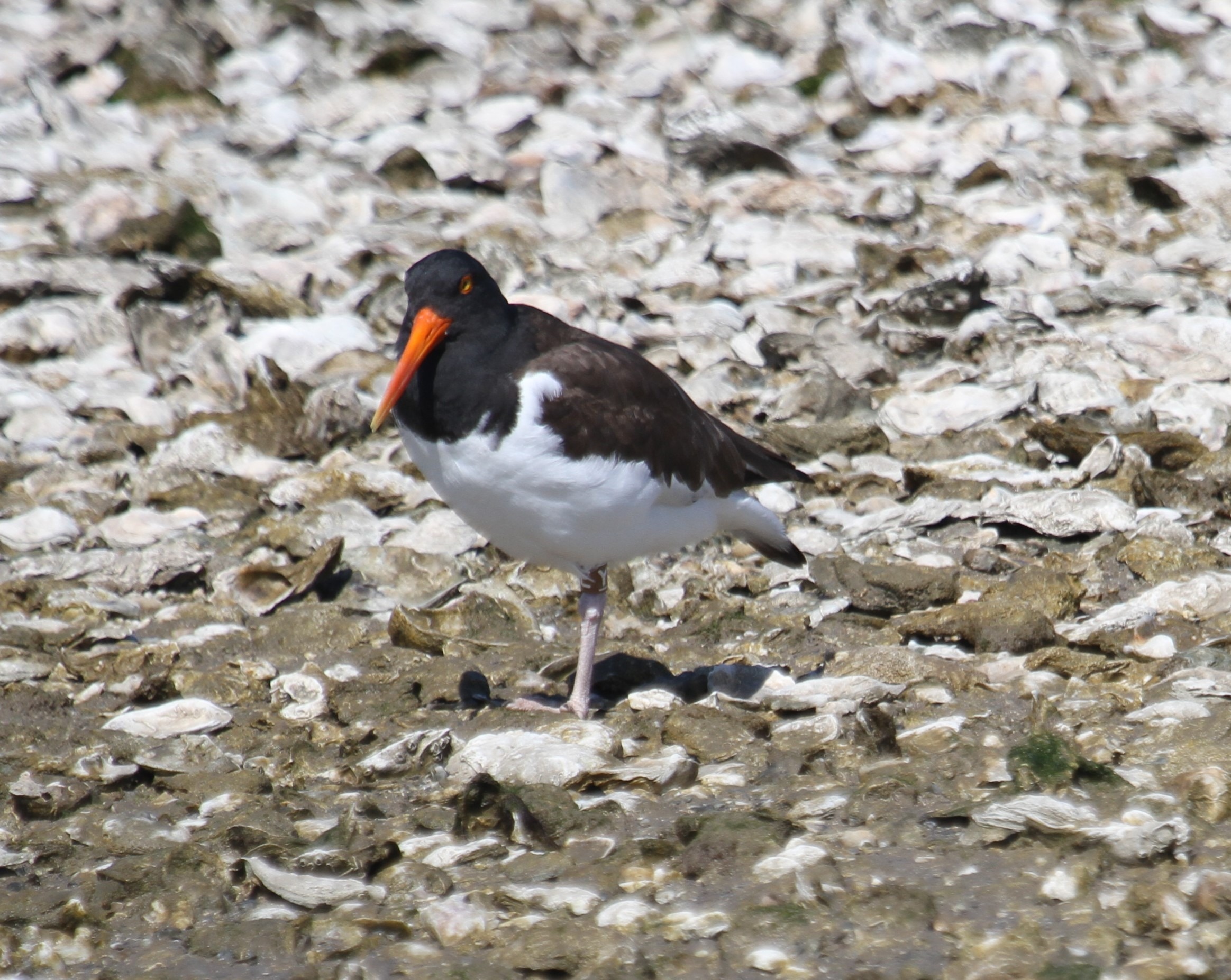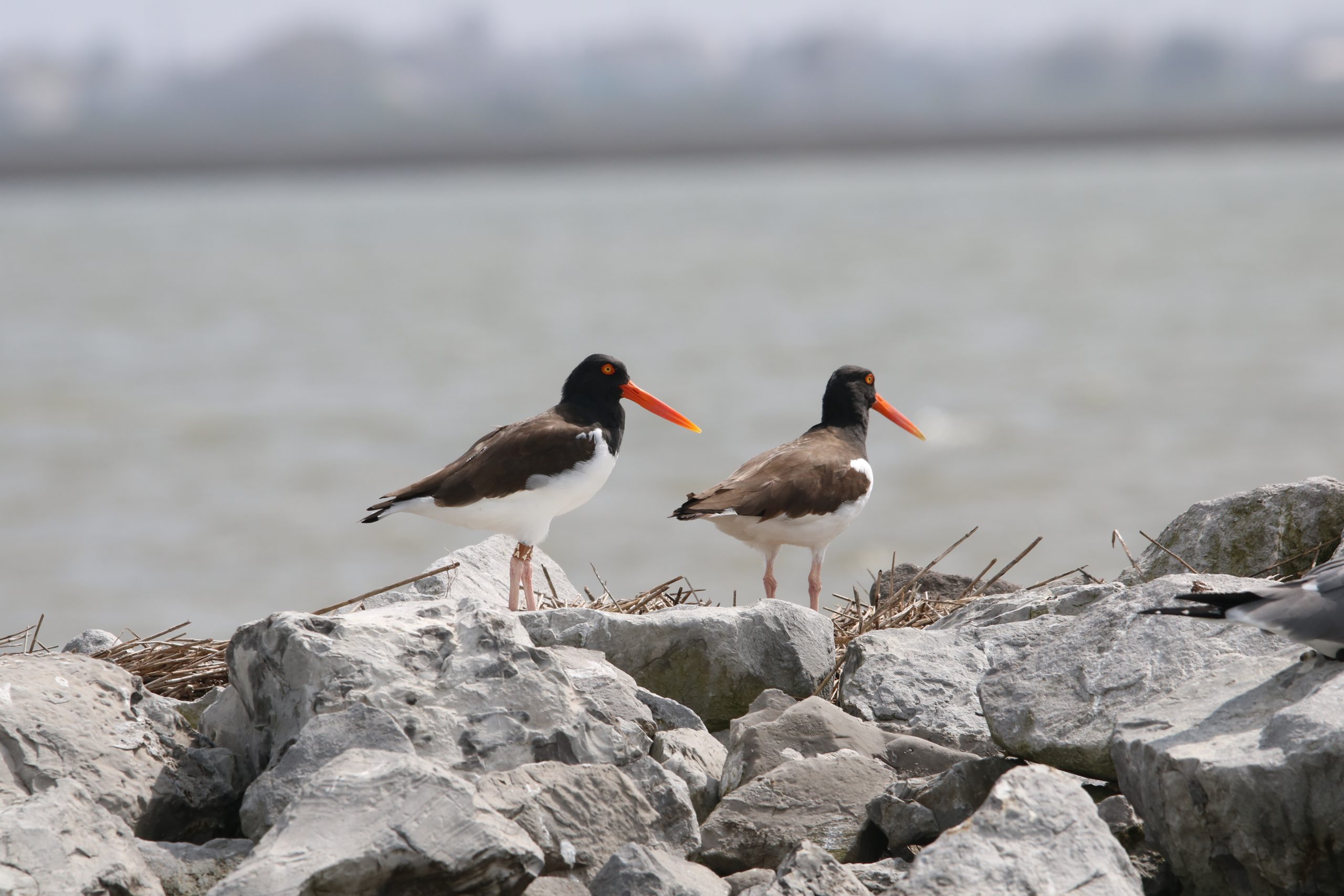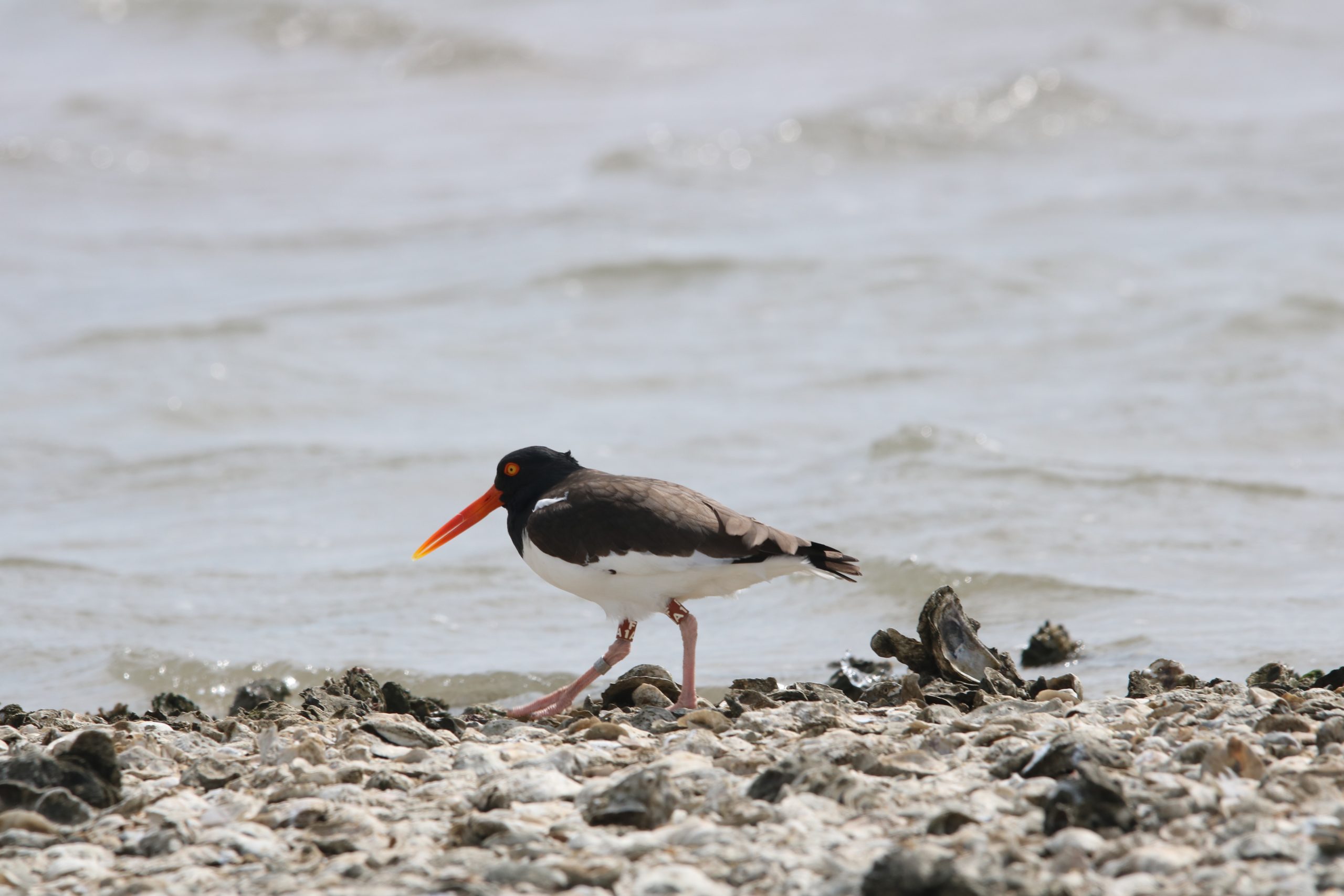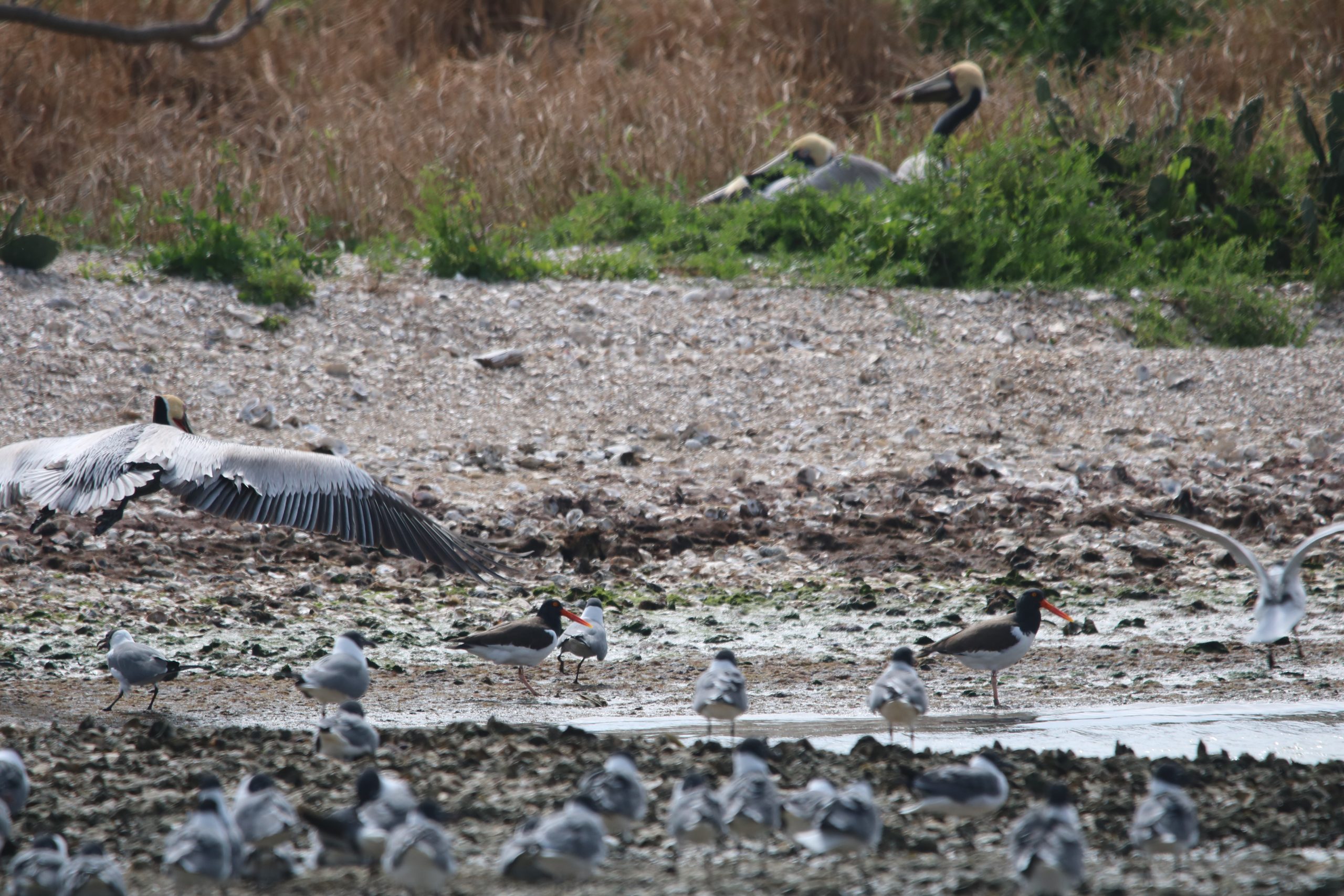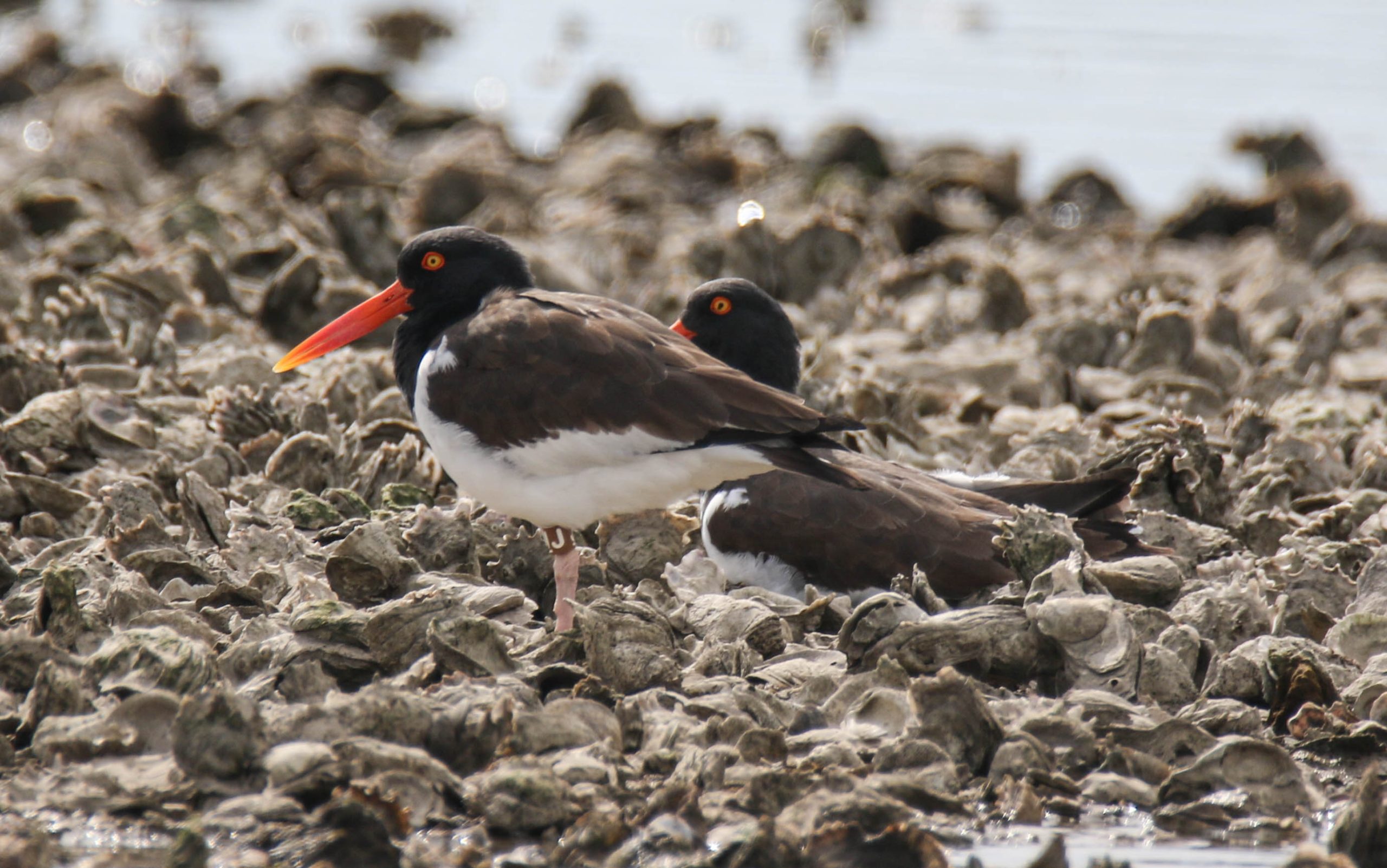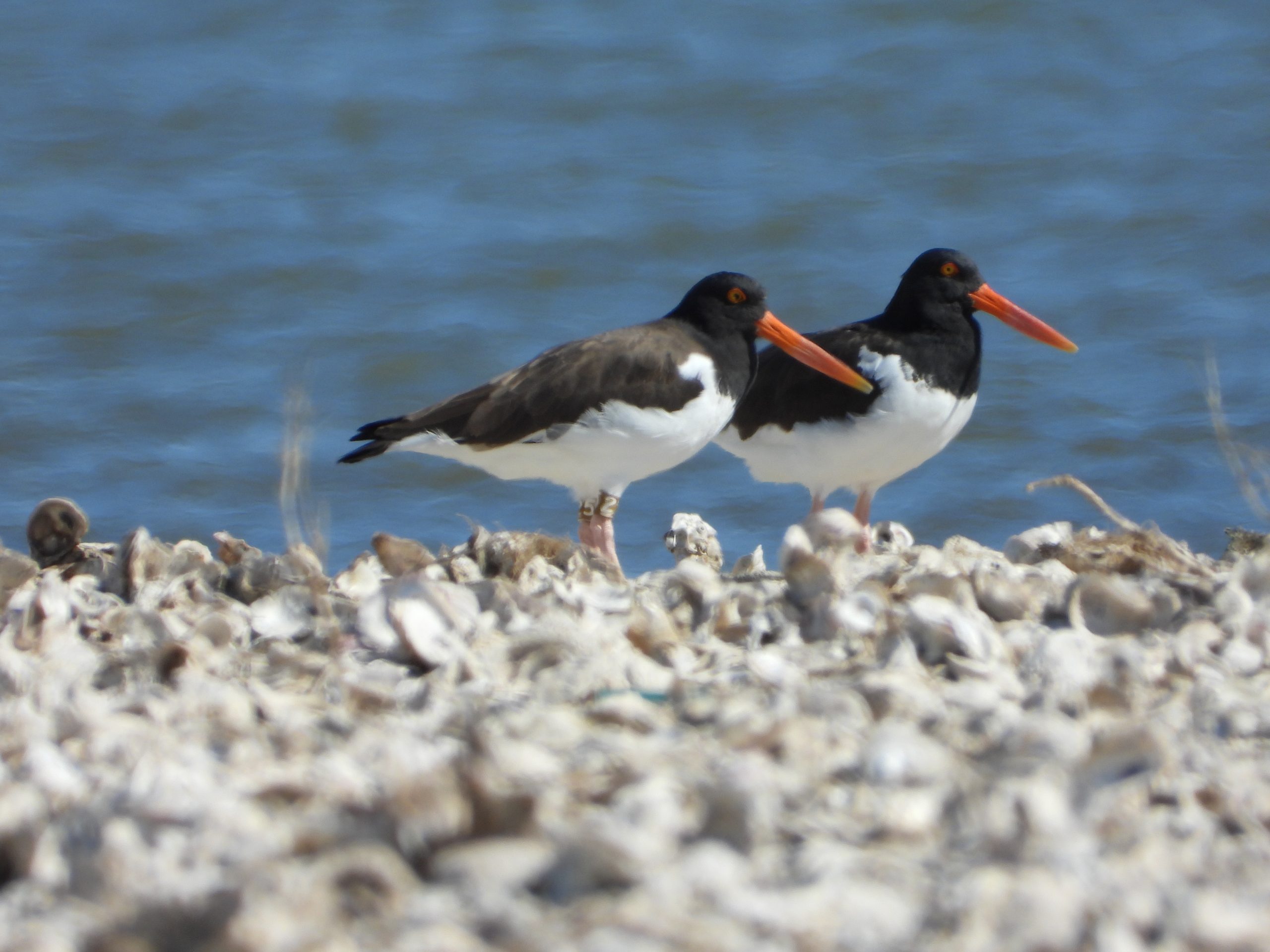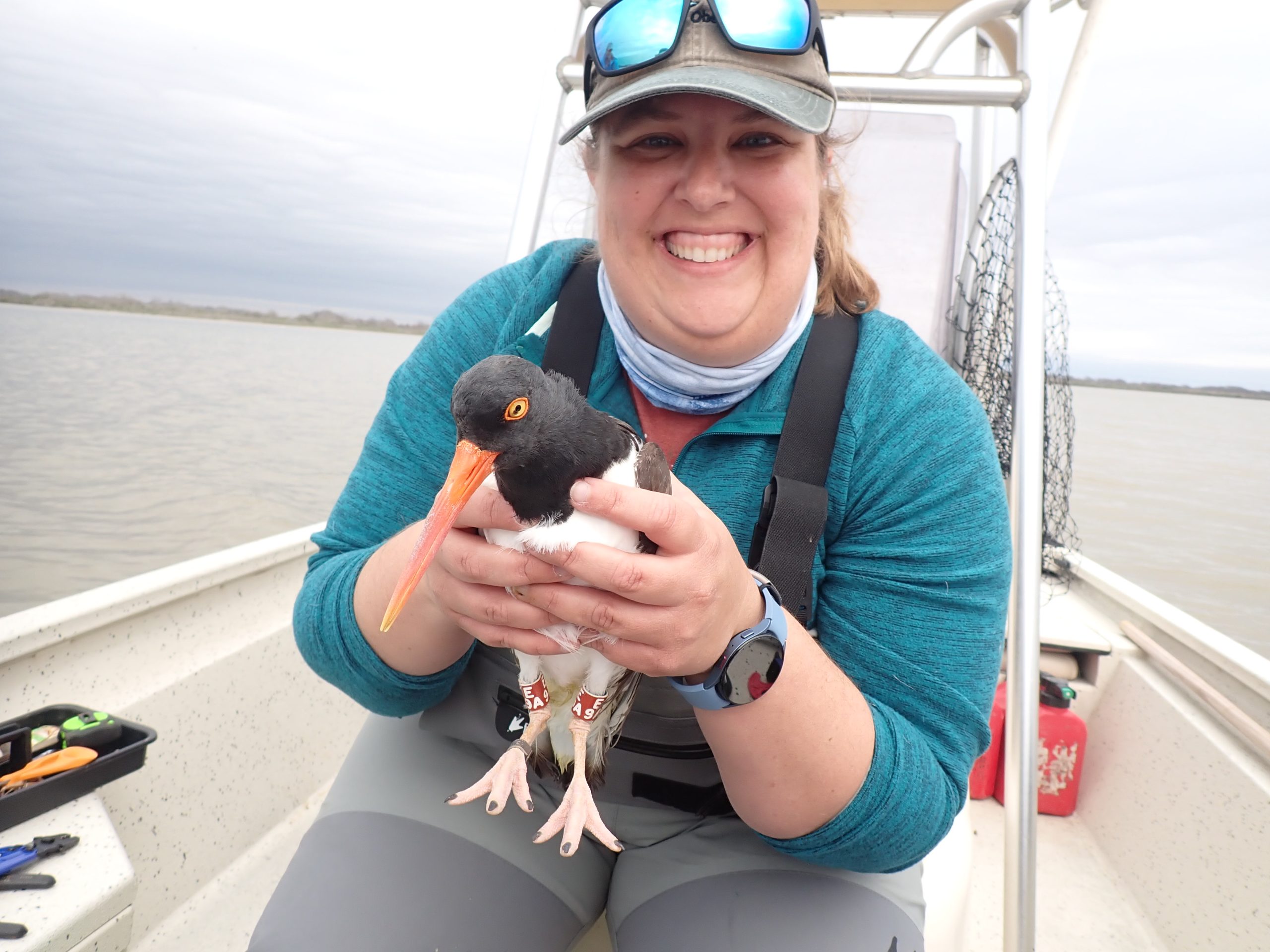By Rebecca Bracken
Welcome back to the Oystercatcher Diaries! This is the first entry for the 2024 season, and boy, it has been a busy one already. Over the past month the research crew and volunteers have been out to West Galveston and East Matagorda Bays to find all our banded birds, and we’ve found quiet a few changes! Read on for the soap opera that is the life of American Oystercatcher monitoring.
We started surveying at the beginning of February in West Galveston Bay. That first day, Rebecca, Taylor, research intern Chris, and volunteer John Wright motored around trying to see who was back on territory and what new birds were around. Other days it has been Rebecca with John, Rebecca with John and volunteer Alan Wilde, Sue (now AMOY volunteer extraordinaire!) with John, Sue with Rebecca, and Rebecca, Sue, and research intern Chris. Quite a few crews so far this year since the research team has been really busy! Early on, we realized pretty quickly that the tide was incredibly low, making it difficult get around. And, to complicate things, there was a dredging pipeline running across the bay, so we were very cautious as we headed out!
The tides continued to be low as the month progressed, and we found the pipe on more than one occasion, but we also found most of the banded oystercatchers!
Up in and towards Swan Lake, LR and 20 were back on territory, but neither has as nest yet. In Swan Lake, 11 and his mate having been spending their days foraging on the exposed reef. They tend to be late nesters, so we didn’t expect them to have eggs yet. K7, X3, and 39, and their respective mates, are all back where they should be. K7 decided the beginning of March was a good time to lay eggs, so there’s one nest up there right now!
Over on Struve Luci, there’s been a bunch of activity. YK has replaced L9 on the territory on the south end of the island. While we’ll miss L9, kudos to YK for finally picking a good spot to nest! HM and XY, 12 and unbanded, unbanded and E5A, and LT and JA are all back on Struve. Kevin, an AMOY volunteer, let me know early in February that 12 and unbanded were just about ready to have a nest, and a week or so late, followed up with an email that they were definitely nesting! I was out of town, but Sue headed out with John to see what they could find. Not only did she find 12’s nest, but also LT and JA’s, and YK and unbanded’s! I was really bummed that she got to find the first nests of the season!
Struve has already been an early nesting site, so we did something a little different there this year. We received funding late last year to put out transmitters on 5 oystercatchers. We just had to decide which oystercatchers were the lucky ones! We decided YK would be a good fit, so we captured him last week and fitted him with a Path Track transmitter that will stay on him for the year and let us know where he is foraging.
He not only took the transmitter like a champ, but he now is a proud papa! His nest was in the process of hatching when we checked on him this week, with 1 chick already out of the egg. 12 and unbanded’s nest also hatched; they have 2 chicks. LT and JA’s eggs should be hatching any day now as well!
Over on Jigsaw, we have only seen two of the normal 3 pairs but we haven’t been able to get to Jigsaw consistently because of the pipeline. We’ve seen X2 and mate W2Y, and YE and unbanded, but haven’t seen LH and JX yet. No nests on Jigsaw yet.
We haven’t found our remaining Galveston Island birds, like 16 and W8W. But C8A and unbanded, and A4A and unbanded, are back on the breakwater near Gangs Bayou. No nests there either.
Over on South Deer, everyone is back where they should be but no nests that we know of. A1A and unbanded, unbanded and A5A, Y7 and unbanded, and F1A and E2A are all back where they should be. We couldn’t make it there this past week, so maybe by the next trip out there will be a nest for us to find!
On North Deer, we only have two pairs at the moment. C1A and unbanded are back on territory, but no activity yet. On the other side, YM and new mate E8A (sad to see JH disappear) were spotted. This past week, only one adult was found, so there might be a nest for us to find next week since the pipe blocked our access this week.
On Marker 52, JJ is definitely up to something with his new mate, a new unbanded bird. We tried to catch them a few weeks ago to get her banded, but they weren’t interested in our decoys. We might try again later, and will pop up on the island next week to find their nest. J6 and UF are moving around quite a bit right now, but we expect them to have a nest soon.
Further down Marker 52, E4A has now moved to the Tiki Spoil island and is nesting with new mate X3Y. They have 3 eggs that should hatch between now and next time we see them. W5 and new mate U5Y are hanging around the end of the island, but we haven’t seen any signs of nesting activity from them yet. Thankfully, good ‘ole FR (Freddie!) can be trusted to have a nest. He and his mate have 2 eggs.
Y2 is now with W1W, but they have been foraging on the reefs just about every time we’ve seen them. No nesting activity there yet.
Over in East Matagorda Bay, LF and M4 have a nest of 3 eggs that will hopefully hatch soon. We haven’t seen F8A and unbanded yet this year, but will be out this coming week and will try to find them. 25 and unbanded have been on their island. They normally start nesting in mid-March, so maybe we’ll find a nest for them this coming week.
On the other side of Old Gulf Cut from where 25 nests, A7A has been replaced by an unbanded bird. But that gave us a great opportunity to catch a new bird, band it, and put on another transmitter. Meet E9A! We aren’t sure if E9A is a male or female, but it now is carrying some snazzy hardware so we can track it around the bay. I was super excited because this was the first adult oystercatcher I’ve banded; it was a really cool moment for me.
The dredge pipeline will hopefully we removed by the end of next week, so we can get back to our normal stomping grounds! Stay tuned for the next installment to see how many nests we find in the next 2 weeks.
If you like oystercatchers and you want to support this project, you can make a donation (thank you!) on our website here. And how could anyone not like oystercatchers! You can also adopt a pair of oystercatchers to support this project if you’d like. If you adopt a pair, you will receive an adoption certificate for your birds and I will update you monthly on their progress throughout the breeding season. All adoption funds will be used to fund our work for the oystercatchers.
Current Stats for upper Texas coast from Swan Lake to East Matagorda Bay: 5 nests being incubated, 0 failed nests, 2 nests with unfledged chicks, 0 nest with undetermined status, 0 chicks fledged
Note: All trapping and banding for this project is in accordance with federal and state permits issued to Rebecca Bracken, GCBO Conservation Research Director. Bird handling by volunteers is only permitted in the presence of Rebecca Bracken or Susan Heath and volunteers are trained in proper bird handling techniques.

